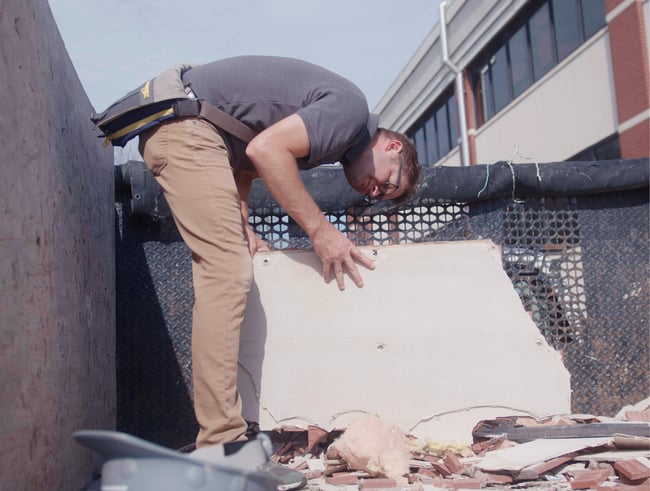Reasons for Cost Increases During Construction

Maintaining a budget is a benchmark of success on a construction project. Renovating or constructing a new building is a large investment, and every owner wants to control costs.
While your architect will design the project to fit within your budget, occasional cost increases can occur during construction. To prepare for these situations, early discussions about setting aside a construction contingency within the budget are a must.
Construction contingencies are meant to cover any unforeseen conditions that arise during construction. Typically, they are equal to 5% of the construction cost, though projects with more unknowns may require higher amounts.
Building projects can present many unknowns, and we always recommend holding onto your contingency until construction is complete. This article will discuss a few reasons why cost increases during construction may occur, helping you understand the importance of contingencies and the situations they cover.
5 Reasons for Cost Increases During Construction
1. Unforeseen Site Conditions
Unforeseen site conditions are one of the most common reasons why costs increase during construction. Despite pre-construction field verification, a site condition could be discovered once work is underway.
These situations are more common during renovations. For example, during demolition, the contractor may discover mold or a hazardous material like asbestos. To address this issue, you will need to hire an abatement specialist.

Unforeseen conditions discovered during demolition may increase costs.
Similarly, when constructing a new building, the team may discover issues with the site’s soil. Although a geotechnical engineer will take soil borings before construction, they may not find every issue. You may need remediation services if the contractor discovers unsuitable conditions, such as the remnants of an old foundation or soil not achieving compaction.
Although these situations are unknown before the start of construction, your architect understands the potential of them occurring. The construction contingency should cover the cost if these situations arise.
2. Labor Shortages
Occasionally, labor shortages can drive up a project’s cost. Although a contractor will account for labor in the bid, ample workers may not be available for every trade.
For example, there may be a shortage of drywallers or welders. The basic rule of supply and demand applies. Fewer workers can lead to your contractor paying a premium.
Generally, the contractor will absorb this cost, but occasionally, it falls back on the owner. Your architect should understand labor availability in your area and design for these conditions. For example, if masonry workers are in short supply, your architect may choose a different system like precast concrete.
3. Product Availability
Like labor, product availability can increase construction costs. When specified products are unavailable, your design and construction team will seek alternatives.
Depending on the situation, when specified products become unavailable, alternative products may be selected that come at a premium. Your architect may also need to change dimensions for some project components, creating a ripple effect between trades.
A collaborative relationship between the architect and contractor during the design process can help mitigate these situations. Your design team should be aware of the general market conditions and work to reduce the need for products in short supply.
However, product availability can affect all project scopes—from structural materials to light fixtures. Occasional changes based on supply are expected, and the construction contingency should cover these situations.
4. Schedule Delays
Schedule delays may also impact construction costs. If a project is delayed by no fault of the contractor, they may request additional funds.
For example, weather conditions are beyond anyone’s control. A contractor will establish a construction schedule that anticipates seasonal temperature, rainfall, and snowfall averages.
If one month is abnormally rainy, it may delay construction. The contractor will do all they can to get back on track and meet the construction milestones. However, sometimes construction cannot catch up to the desired schedule, and the contractor may request additional funds to manage overhead and project management costs that they incurred.
Similarly, if you experience abnormally cold temperatures during winter construction, the contractor may request additional funds for temporary heating that wasn’t in the initial plans. Generally, the construction contingency should cover these situations.
5. Owner-Requested Changes
Owner-requested changes are one of the most common reasons why costs increase during construction. These types of change orders are not covered by the construction contingency and will increase your budget.
A seemingly minor change—like changing an interior finish —can be more expensive during construction. Although the product may cost $500, you will pay more after bonds, insurance, and labor are applied.
Since changes are more expensive during construction, it’s best to lock in decisions at the end of the design process. Your architect should guide you through decision-making and help you understand the look and feel of the project before breaking ground.
Learn More About Building Project Costs
Construction can be nerve-racking, and occasionally, cost increases occur. Your architect should help you prepare for these situations by building a construction contingency into the budget.
Should any situations arise, your architect will coordinate communication and help you understand the budget implications.
Owner-requested changes fall outside a construction contingency’s scope. To protect your budget, we recommend taking your time in the early stages of the design process and exploring options before setting decisions in stone.
In the early stages of a project, the design is malleable, and changes are easier. As you progress through the process, it becomes more expensive and time-consuming to make changes to the design.
Learn more by reading about the 80/20 rule of design.